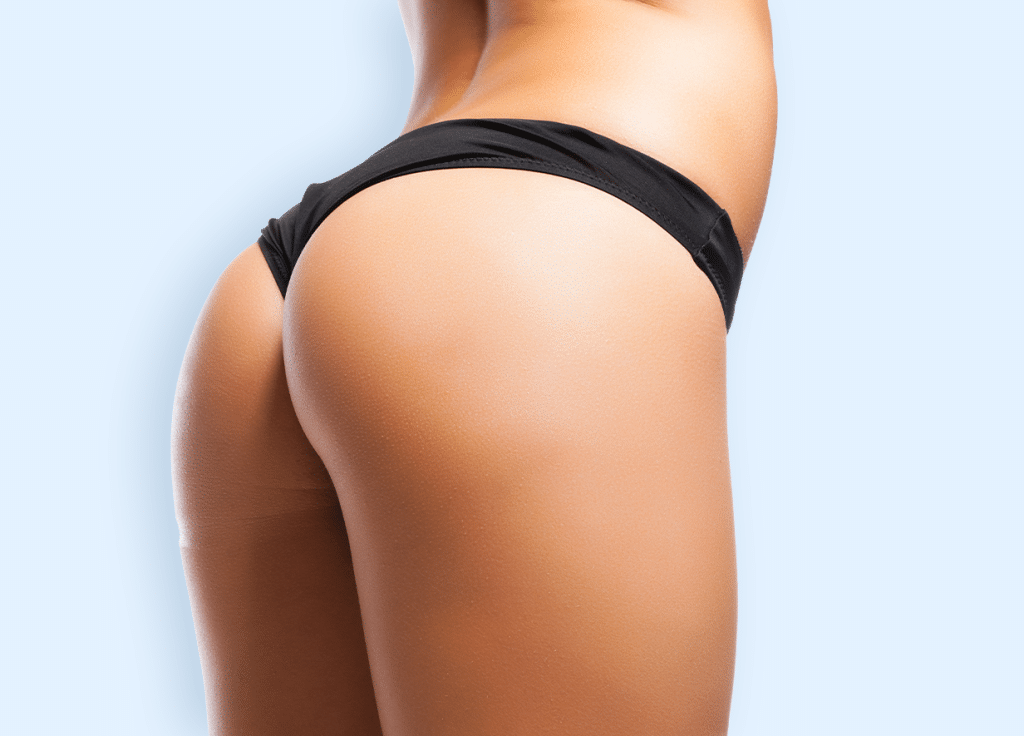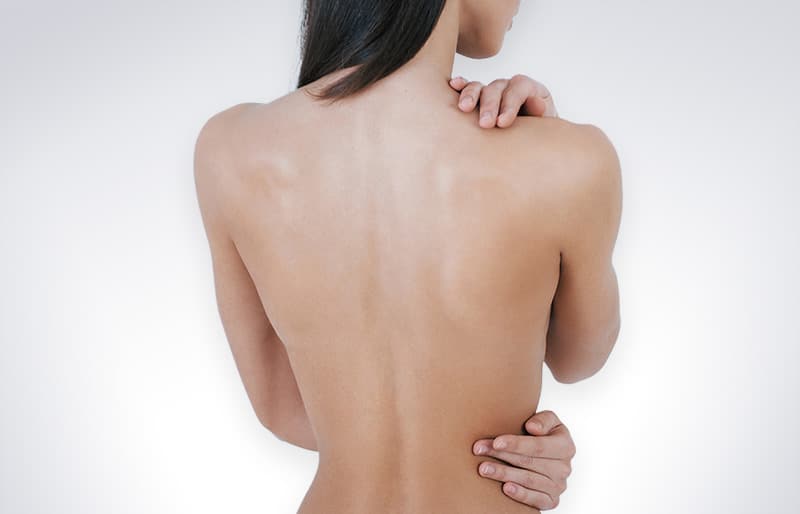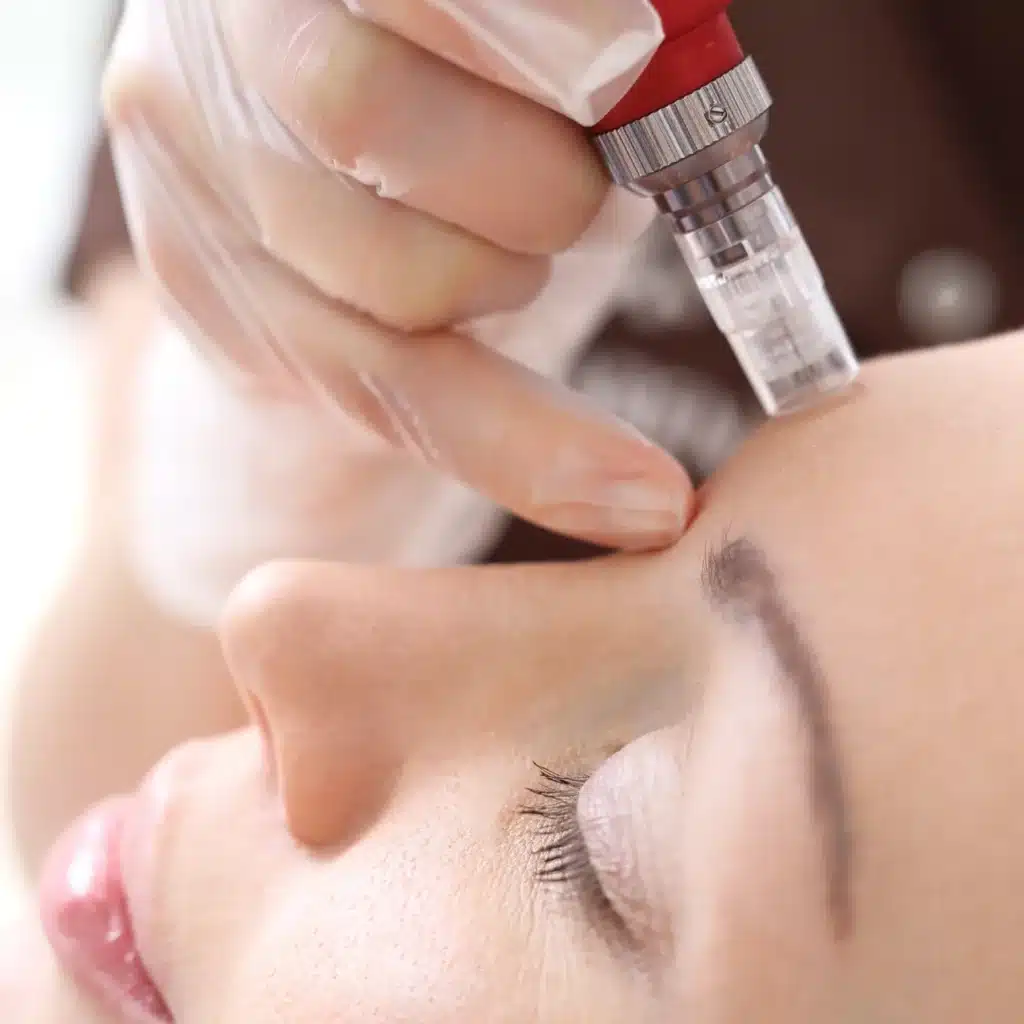Key Takeaways
- Consider Goals: Choose a tummy tuck, a weight loss procedure, if you need to remove excess skin and tighten abdominal muscles around the belly button; opt for liposuction, a weight loss solution, to eliminate stubborn fat deposits in the stomach.
- Know the Differences: Tummy tucks are more invasive with longer recovery times and involve incisions around the belly button, while liposuction is a less invasive surgical procedure for the stomach but may require multiple sessions.
- Evaluate Benefits: Both procedures can enhance body contours, but tummy tucks also improve muscle tone and skin elasticity in the abdominal area, whereas liposuction focuses solely on fat removal from the stomach, highlighting key differences.
- Assess Risks: Understand that both procedures come with risks such as infection, scarring, swelling, and changes in skin elasticity; consult with a qualified surgeon to weigh these risks.
- Visualize Results: Look at before-and-after photos of the midsection and back to set realistic expectations for lipo and choose the procedure that aligns with your desired outcome for excess fat.
- Make an Informed Decision: Consider your health, lifestyle, and cosmetic goals to determine whether a tummy tuck or liposuction is the best fit for you, keeping in mind the potential impact on your back.
Understanding Body Contouring
Definition
Body contouring is a medical procedure. It aims to reshape areas of the body. This can be done after significant weight loss or pregnancy, lipo, or back surgery. The goal is to improve the body’s appearance. Contours are enhanced by removing excess skin and fat.
Surgical Methods
Surgical body contouring involves invasive procedures. Tummy tucks and liposuction are common examples. A tummy tuck, or abdominoplasty, removes excess skin from the abdomen and may include lipo for the back. Liposuction removes fat deposits through suction.
These methods, including lipo, are suitable for those with loose skin or stubborn fat pockets. They require recovery time but offer long-lasting results.
Non-Surgical Methods
Non-surgical methods include treatments like CoolSculpting, laser therapy, and lipo. These use techniques like freezing or heating fat cells to destroy them. They are less invasive and have shorter recovery times.
Non-surgical options are best for those with minor contouring needs. They may not offer results as dramatic as surgical methods.
Psychological Benefits
Body contouring can boost self-esteem. People who have lost a lot of weight often struggle with excess skin. This can affect their confidence and quality of life.
By removing this skin, individuals feel more comfortable in their bodies. This improved self-image positively impacts mental health.
Physical Benefits
The physical benefits are also significant. Removing excess skin reduces chafing and infections. It allows for greater mobility and comfort during physical activities.
Those who undergo these procedures often find it easier to maintain their weight loss. Their bodies become more functional and aesthetically pleasing.
Overview of Tummy Tuck
Procedure Details
A tummy tuck, or abdominoplasty, removes excess skin and tightens abdominal muscles. Surgeons make an incision from hip to hip above the pubic area. They then remove loose skin and fat from the abdomen. The abdominal muscles are pulled together and stitched for a firmer midsection. This procedure often includes repositioning the belly button.
Ideal Candidates
Ideal candidates for a tummy tuck are those with stable weight. People who have lost significant weight or had multiple pregnancies may benefit most. It’s important that candidates do not plan future pregnancies as this can affect results. A tummy tuck is not a substitute for weight loss but helps contour the body.
Recovery Time
Recovery from a tummy tuck takes several weeks. Patients usually need to wear a compression garment to reduce swelling and support their new abdominal shape. Most people return to work within two to four weeks but should avoid strenuous activities for about six weeks. Proper care post-surgery is crucial for optimal results.
Insights into Liposuction
Fat Removal
Liposuction targets unwanted fat deposits. It removes localized fat that does not respond to diet and exercise. This surgical procedure involves a plastic surgeon making small incisions. A thin tube, called a cannula, is inserted to suction out the fat cells.
Not a Weight Loss Solution
Liposuction is not for weight loss. It does not replace healthy eating or exercise. Instead, it sculpts the body by removing stubborn fat. The amount of fat removed is usually small. Patients should be close to their ideal weight before undergoing lipo.
Skin Tightening Limitations
Liposuction has limits when it comes to skin tightening. It does not address loose or sagging skin. If there is excess skin after fat removal, another procedure may be needed. For example, tummy tuck surgery can remove both excess skin and fat.
Types of Liposuction
Tumescent Liposuction
Tumescent liposuction is the most common type. It involves injecting a solution into the fatty area. The solution contains saline, lidocaine, and epinephrine. This helps numb the area and reduce bleeding.
Ultrasound-Assisted Liposuction
Ultrasound-assisted liposuction uses sound waves to break up fat cells. The ultrasound energy liquefies the fat before removal. This method can be useful for denser areas of body fat.
Key Differences Highlighted
Objectives
A tummy tuck focuses on removing excess skin and tightening muscles. This procedure is ideal for those who have lost significant weight or women post-pregnancy. It helps in flattening the abdomen by removing loose skin and repairing weakened muscles.
Liposuction, on the other hand, targets fat removal. It removes fat deposits from specific areas like the abdomen, thighs, or arms. Liposuction does not address loose skin or muscle laxity. It’s suitable for individuals near their ideal weight but struggling with stubborn fat pockets.
Recovery Times
Recovery times differ significantly between these two procedures. After a tummy tuck, patients typically need about 2-4 weeks of recovery time before resuming normal activities. The procedure involves more extensive surgery and thus requires longer healing.
Liposuction usually has a shorter recovery period. Most patients can return to work within a few days to a week. Swelling and bruising may last several weeks, but the overall downtime is less compared to a tummy tuck.
Surgical Risks
Both procedures come with surgical risks. Tummy tucks involve more extensive surgery, increasing the risk of complications like infection or poor wound healing. Patients might experience more pain and discomfort post-surgery due to muscle repair.
Liposuction carries risks such as infection, contour irregularities, and anesthesia-related issues. However, because it is less invasive than a tummy tuck, the overall risk profile tends to be lower.
Patient Goals
Patient goals play a crucial role in choosing between these procedures. Those seeking to remove excess skin and tighten abdominal muscles should consider a tummy tuck. This option provides comprehensive results for those needing both skin removal and muscle tightening.
Individuals aiming to eliminate localized fat deposits without addressing loose skin might opt for liposuction. This procedure suits people who are already close to their target weight but want targeted fat reduction.
Individual Results
Individual results vary based on factors like age, skin elasticity, and overall health. A tummy tuck offers dramatic changes in body contouring by addressing multiple issues simultaneously.
Liposuction results also depend on individual characteristics but primarily focus on fat removal rather than overall body reshaping. Both procedures require realistic expectations regarding outcomes.
Benefits Explored
Aesthetic Improvements
Tummy tuck and liposuction both provide significant aesthetic improvements. Tummy tuck removes excess skin and tightens muscles. This results in a flatter, firmer abdomen. Liposuction targets fat deposits, sculpting the body for a more contoured look. Both procedures can boost self-esteem by enhancing one’s appearance.
Enhanced Self-Esteem
Successful tummy tuck or liposuction often leads to enhanced self-esteem. Patients feel more confident wearing fitted clothes. They also feel better about their bodies during social activities. This increased confidence can positively impact mental health.

Health Benefits
A tummy tuck offers several health benefits beyond aesthetics. Improved posture is one notable benefit. By tightening abdominal muscles, a tummy tuck supports the spine better. This can reduce back pain significantly.
Long-Lasting Results
Both procedures offer long-lasting results when paired with a stable lifestyle. Maintaining a healthy diet and regular exercise is crucial. These habits help preserve the outcomes of tummy tuck and liposuction.
Recovery Process
The recovery process varies between the two procedures. Tummy tuck recovery takes longer due to muscle repair involved. Expect a recovery period of several weeks to months for full healing. Liposuction has a shorter recovery time since it focuses on fat removal only.
Outpatient Basis
Liposuction is usually performed on an outpatient basis. Patients can go home the same day after treatment at the site of surgery. Tummy tucks may require an overnight hospital stay depending on the extent of surgery.
Risks Involved
Common Risks
Both tummy tucks and liposuction come with surgical risks. Infection is a primary concern. Patients may experience redness, warmth, or discharge at the incision site. Scarring is another risk. Tummy tuck scars can be long and noticeable. Liposuction may leave small scars where the cannula enters the skin.
Blood clots are rare but serious complications. They can occur in the legs and travel to the lungs. This condition is called pulmonary embolism. Swelling is common after both procedures. It can last for weeks or even months.
Qualified Surgeon
Choosing a qualified surgeon minimizes these risks. Look for board-certified plastic surgeons. They have specialized training in these procedures. Many patients find this crucial for their safety and satisfaction.
Check the surgeon’s experience with tummy tucks and liposuction. Ask about their success rates and any complications they have encountered. Reading reviews from other patients can also provide insight into their expertise.
Revision Surgery
etimes, initial results do not meet patient expectations. Revision surgery might be needed to correct issues like asymmetry or excess skin left behind.
Tummy tuck revisions often focus on tightening loose skin or refining scars. Liposuction revisions may address uneven fat removal or contour irregularities.
Visual Transformations Showcased
Before-and-After Photos
Before-and-after photos of tummy tuck and liposuction patients show the dramatic changes. These images highlight the differences in body contouring. Patients often see a flatter abdomen after a tummy tuck. Liposuction can reduce fat in targeted areas.
For example, one patient saw significant improvement in her waistline after liposuction. Another patient had excess skin removed with a tummy tuck, resulting in a smoother appearance. These photos provide clear evidence of what these procedures can achieve.
Real-Life Testimonials
Testimonials from individuals on TLC’s Skin Tight offer real-life success stories. One woman shared her experience with a tummy tuck after losing over 100 pounds. She described how the surgery helped her feel more confident.
Another man discussed his liposuction journey to remove stubborn belly fat. He felt more comfortable in his clothes and enjoyed increased mobility. These stories demonstrate the emotional impact these surgeries have on people’s lives.
Emotional Impact
The emotional impact of these transformations is profound. Many patients report feeling happier and more self-assured. They no longer feel embarrassed about their bodies.
One patient said that she could finally wear swimsuits without feeling self-conscious. Another mentioned that he felt younger and more energetic after his procedure. These changes often lead to an improved quality of life.
Physical Changes
Physical changes are also significant for patients undergoing these procedures. Tummy tucks involve removing excess skin and tightening muscles with sutures. This results in a firmer abdominal area.
Liposuction focuses on removing fat deposits from specific areas like the thighs or stomach. The results are usually immediate, providing patients with a leaner look quickly.
Making the Right Choice
Consulting a Surgeon
A plastic surgeon can help choose between tummy tuck and liposuction. They evaluate your needs and goals. Good candidates for these procedures should be in good health. The surgeon will assess your skin elasticity and fat distribution.
Consultations involve discussing medical history. Surgeons may ask about previous surgeries. They also review current medications. This helps them determine the best option for you.
Understanding Benefits and Limitations
Realistic expectations are crucial. Tummy tucks remove excess skin and fat. They also tighten abdominal muscles. Liposuction targets specific fat pockets.
Each procedure has limitations. A tummy tuck leaves a scar along the bikini line. Liposuction may result in uneven contours if not done properly.
Benefits include improved body shape and confidence. However, neither procedure is a substitute for weight loss or healthy living.
Considering Lifestyle Changes
Maintaining results requires lifestyle changes. Stable weight is essential for long-term satisfaction. Weight fluctuations can affect results negatively.
Healthy eating habits support stable weight. Regular exercise keeps muscles toned and skin firm. These changes ensure that surgical results last longer.
Individual Needs and Goals
Every person has unique needs and goals. Some may need only minor corrections with liposuction. Others might require extensive surgery like a tummy tuck.
Discussing your goals with a surgeon helps tailor the procedure to your needs. Ideal weight maintenance is important before surgery to achieve optimal results.
Real-Life Examples
Many people have shared their experiences post-surgery. For example, Jane Doe had a tummy tuck after losing significant weight through diet and exercise. She maintained her new figure by continuing her healthy habits.
John Smith chose liposuction to remove stubborn fat around his abdomen despite being at his ideal weight already. He found that maintaining an active lifestyle helped him keep his new shape.
Final Remarks
Deciding between a tummy tuck and liposuction is a significant choice. Both have their perks and risks, but the best option depends on your goals and body type. Consulting with a qualified professional can help you make an informed decision.
Ready to transform your body? Take the next step. Book a consultation with a certified plastic surgeon to discuss your options. Your dream body is within reach, so act now and start your journey towards confidence and self-love.
Frequently Asked Questions
What is the main goal of a tummy tuck?
A tummy tuck, or abdominoplasty, aims to remove excess skin and fat from the abdomen. It also tightens the abdominal muscles for a firmer look.
How does liposuction differ from a tummy tuck?
Liposuction targets fat removal from specific areas. A tummy tuck focuses on removing excess skin and tightening muscles, mainly in the abdomen.
Who is an ideal candidate for a tummy tuck?
Ideal candidates are those with loose skin and weakened muscles post-pregnancy or significant weight loss. They should be in good health.
Can I combine a tummy tuck and liposuction?
Yes, combining both procedures can enhance results. This approach addresses both fat removal and skin tightening for better body contouring.
What are the risks associated with liposuction?
Risks include infection, scarring, and uneven contours. Always consult with a certified plastic surgeon to understand potential complications.
How long is the recovery period after a tummy tuck?
Recovery typically takes 2-4 weeks. Full recovery may take several months. Follow your surgeon’s advice for optimal healing.
What benefits can I expect from these procedures?
Both procedures offer improved body contour and self-confidence. A flatter abdomen from a tummy tuck; reduced fat deposits from liposuction.











